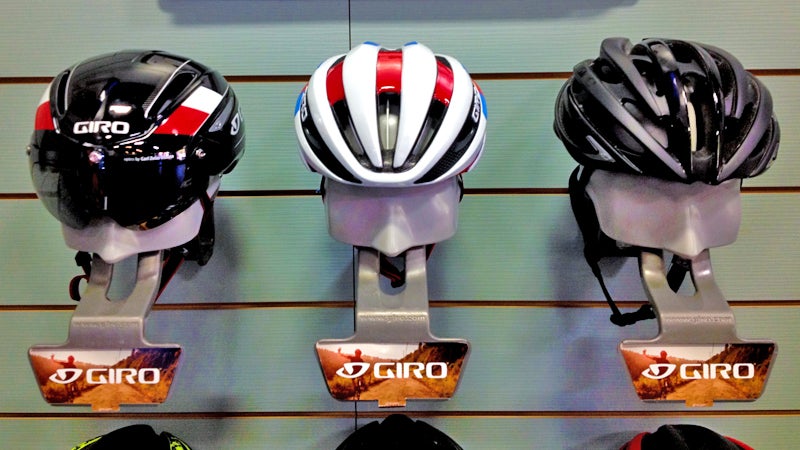At a wind tunnel in Scottsdale, Arizona, helmet and apparel manufacturer Giro released what it describes as the next iteration of the aero road helmet.
According to Giro, combines the comfort and cooling-abilities of its top-selling road lid, the Aeon, with the aerodynamic benefits of its aero road model, the Air Attack. “This is the helmet that has it all,” says Eric Richter, senior brand manager at Giro. “Cooling, aerodynamics, and light weight.”
Up until July 2012, when Giro launched , the aero road category didn’t exist. There were road helmets, which were feathery and well ventilated. And there were time trial helmets, which minimized drag but were bulky and extremely hot. But the two variants were mutually exclusive. “For the road rider, we had taken lightweight as far as it could go,” says Richter. “We realized that the real gains to be made were in aerodynamics.”
The Air Attack was Giro’s first attempt at bring the aerodynamic benefits of a TT helmet to a lid you could wear comfortably every day, all day. However, not everyone loved its looks. “Industrial design was an impediment to some people buying the Air Attack,” Richter admits. So the company set out to make a more conventional-looking helmet that was just as aerodynamic as the Air Attack.

Enter the Synthe, which Giro says is , and 13 percent lighter than the Air Attack. According to one journalist, the Synthe also better than the Air Attack.
The performance numbers can seem obscure, even doctored (every company seems to have similar stats to bolster its product), which is why Giro debuted the Synthe at in northeastern Phoenix.
There, we witnessed several wind-tunnel tests on both the Synthe and the Air Attack that validated those stats. According to Giro’s tests, the Synthe not only has significantly less drag than the Aeon, but it also supposedly edges by about 8 grams of drag over a 40-kilometer course—the equivalent of about four seconds.
But it’s not just about aerodynamics. In Giro’s thermal testing—a lab protocol dubbed the “Therminator” that uses 24 sensors to monitor the temperature of a heated-up head in the wind—the Synthe dissipated heat better than any of its top competitors, meaning it will cool riders’ heads more quickly. Aero models such as the Air Attack and the Evade were the least breathable on the scale.
In addition to all the lab protocols and results, Giro brought test samples of the Synthe for on-road testing. On our first outing, the new helmet felt surprisingly cool and well-ventilated despite the 85-degree Phoenix morning heat. Testers especially liked the sunglass docks, which make it easy to store your shades while climbing or at dusk.
The Synthe will be available in eight colorways, including a revolving special edition version, and will sell for $250. It will go on sale in late fall. Both the Aeon and the Air Attack will remain in the line.


